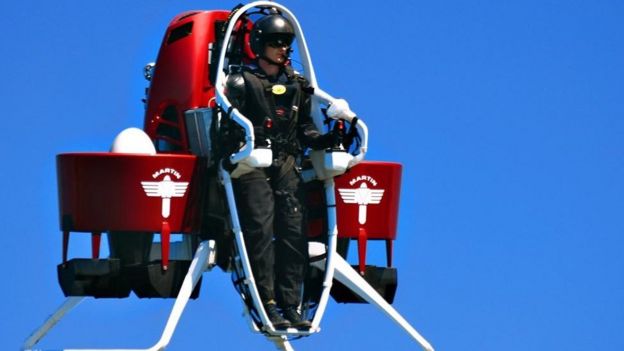Tomorrow's cities: What it feels like to fly a jetpack
By Jane WakefieldTechnology reporter
Share
Image copyrightTHINKSTOCK
Image captionCities are at their calmest as dawn breaks, but it won't last for long
Over the next four weeks, BBC News will be offering a snapshot of the day in the life of a city - looking at how technology is transforming our urban landscapes, now and in the future.
We will look at how technology is improving the morning commute, what it is doing to make our working day better, how it will transform our evening's entertainment and what goes on at night in the smart cities that increasingly never sleep.
We start as urban dwellers around the world begin the day - with the morning commute. In the future, that may mean hailing a jetpack.
Image copyrightMARTIN'S AIRCRAFT COMPANY
Image captionSome people dream of getting to work via a jetpack
"Jetpacks will be part of future cities," Peter Coker, vice-president of innovation at KuangChi Science, Martin Aircraft Company's major Chinese shareholder.
"I see it as being the Uber of the sky."
Martin Aircraft Company, based in New Zealand, already has a working prototype that can fly at 2,800ft (850m) at 45km/h (27mph) for 28 minutes.
And Mr Coker says commuters will be able to hail an unmanned jetpack via a smartphone app.
He admits there will be "regulatory hurdles" to overcome and, if the airways become packed with jetpacks, a need for "automatic collision avoidance".
But, according to Michael Read, who is one of only two test pilots who have actually flown the jetpack, it will be worth it.
"It's intuitive, free-flowing and most of all, fun," he says.
"Being able to be transported up into the sky in such an unconstrained way is truly a unique and enjoyable experience.
"Of the nearly 3,000 people we've had fly our simulators, almost every single one of them has left with a big smile on their faces.
"Given that the simulator is very close to reality, this gives us the biggest indication that it is as much fun as people imagined it would be.
"I certainly enjoy it."




